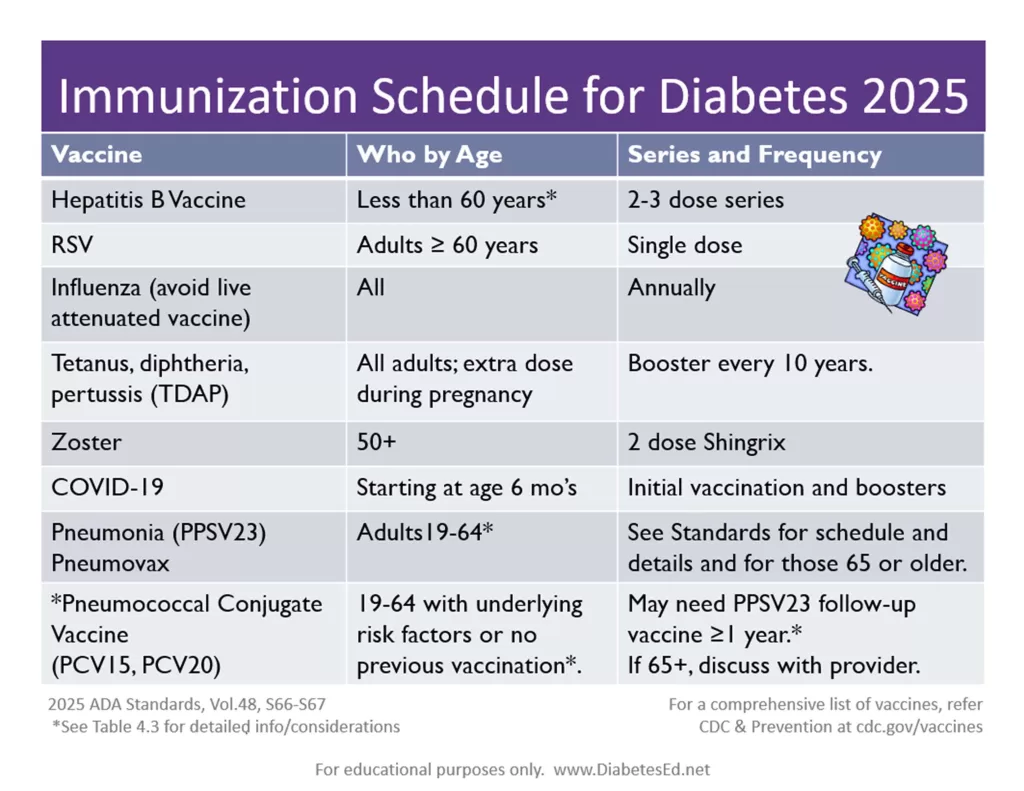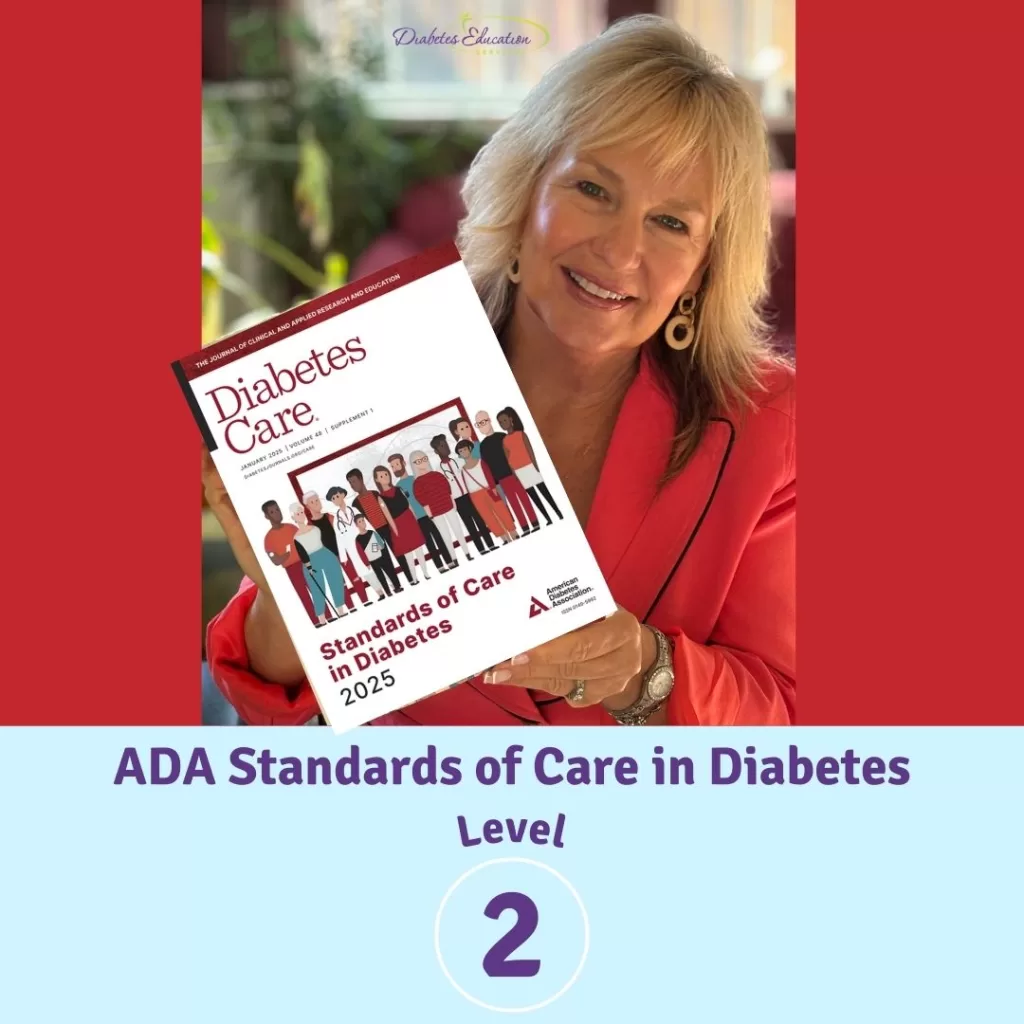
Ready to get certified?
Free CDCES Coach App

Subscribe
eNewsletter
Download
Free Med Pocket Cards
Question of the Week | What defines overbasalization according to 2025 ADA Standards?

According to the new 2025 ADA Standards of Care, which of the following most accurately reflects overbasalization?
- basal insulin doses exceeding 0.5 units/kg/day
- significant bedtime-to-morning or postprandial-to-preprandial glucose differential
- low glycemic variability
- basal insulin dose exceeding 50 units twice per day
Want to learn more about this question?
Enroll in our Diabetes Mastery & Cert Readiness
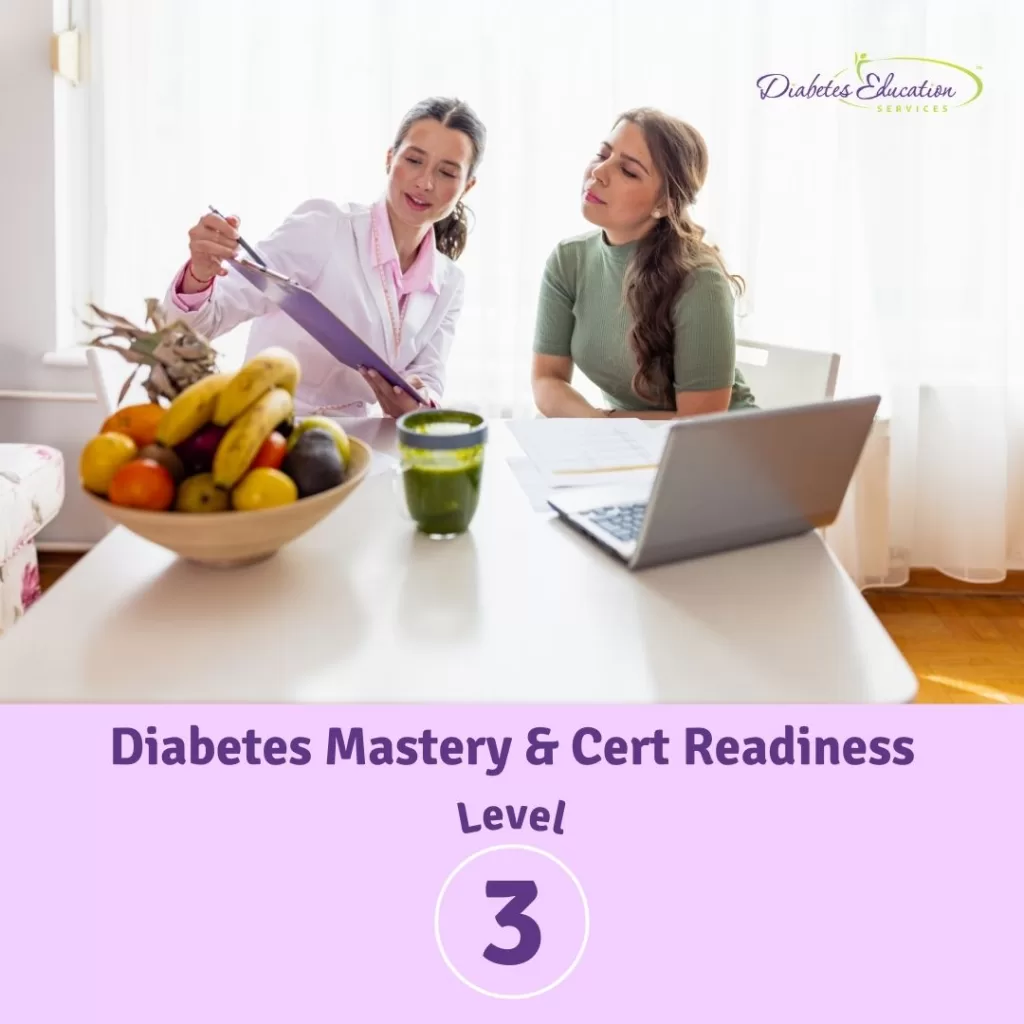
Ready to ace your diabetes certification exams? Our Level 3 courses are the ultimate step in your exam prep journey, designed to fill in any knowledge gaps and solidify your expertise. Whether you’re preparing for the CDCES or BC-ADM exams, these master-level courses offer comprehensive, evidence-based content grounded in the latest ADA Standards of Care in Diabetes.
Dive into critical areas like pharmacology, technology, lifestyle management, and Medical Nutrition Therapy, all while building the practical and strategic skills you need to deliver top-notch care. With video presentations, podcasts, practice tests, and engaging case studies, you’ll gain the confidence and competence to navigate complex diabetes scenarios. Plus, enjoy access to your course materials for a full year! Sign up now and set yourself up for certification success!
Rationale of the Week | Diabetes & Malnutrition Risk
For last week’s practice question, we quizzed participants on Diabetes & Malnutrition Risk 74.26% of respondents chose the best answer. We want to clarify and share this important information, so you can pass it on to people living with diabetes and your colleagues, plus prepare for exam success!
Before we start though, if you don’t want any spoilers and haven’t tried the question yet, you can answer it below: Answer Question
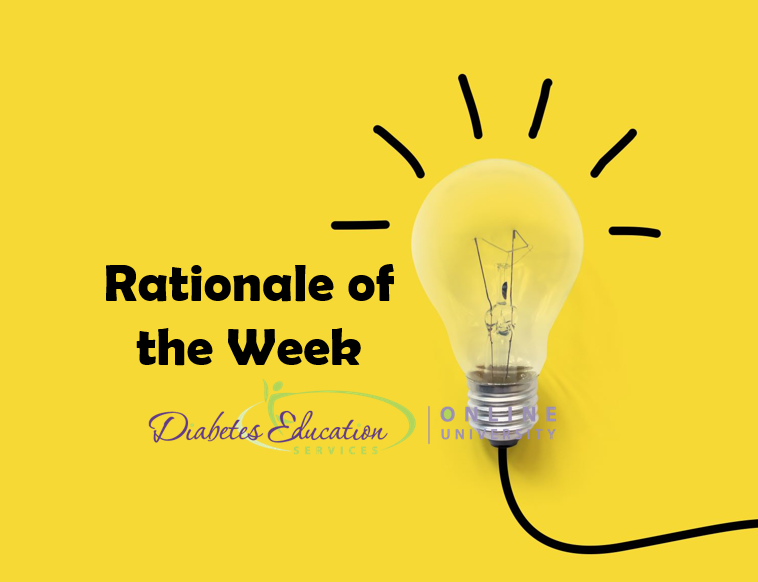
Question: The 2025 ADA Standards of Care have added recommendations for malnutrition screening.
According to these updated standards, who could be at risk for malnutrition?
Answer Choices:
- An individual with a BMI of 38 and 21% weight loss in the past 6 months.
- An individual on incretin therapy with intentional 18-pound weight loss in the past 2 months.
- An 86-year-old with type 1 diabetes and reported recent decline in activity and strength.
- All the above

Getting to the Best Answer
Answer 1 is incorrect. 10.54% chose this answer: “An individual with a BMI of 38 and 21% weight loss in the past 6 months”. Although Answer A is true, it is not the best answer. Malnutrition risk is not solely based on BMI. According to the 2025 ADA Standards of Care, individuals with diabetes experiencing significant weight loss, greater than 20%, may be at risk for malnutrition regardless of starting BMI.
Answer 2 is incorrect. 4.90% of you chose this answer: “An individual on incretin therapy with intentional 18-pound weight loss in the past 2 months.” This answer is also true, but there is a better answer. Even though the weight loss was intentional on incretin therapy, a rapid drop in weight, more than 4 kg/month, can still place an individual at risk for malnutrition. Monitoring nutrition status during weight loss pharmacotherapy is essential.
Answer 3 is incorrect About 10.29% of respondents chose this: “An 86-year-old with type 1 diabetes and reported recent decline in activity and strength”. This answer is true but not the best answer. Older adults, especially those with type 1 diabetes, are at greater risk for malnutrition, particularly when they experience declines in physical activity and strength. Malnutrition and sarcopenia, a loss of lean body mass, may develop simultaneously.
Finally, Answer 4 is correct. 74.26% chose this correct answer – GREAT JOB! All these scenarios indicate an increased risk of malnutrition and warrant additional screening. The ADA Standards of Care emphasize screening for malnutrition in individuals who have lost significant weight, especially individuals’ post-metabolic surgery, on incretin therapy, and individuals managing multiple chronic conditions who may experience an increased risk of developing sarcopenia and malnutrition. Check out the 2025 ADA Standards of Care Section 5 and Section 8 for the latest on malnutrition screening recommendations.
We hope you appreciate this week’s rationale! Thank you so much for taking the time to answer our Question of the Week and participate in this fun learning activity!
Want to learn more about this question?
Join us live on Jan. 30th for our
Standard of Care Course
Level 2

Diabetes Education Services Online University Courses are an excellent way to study for your exam anytime and anywhere that is convenient for you. You will have immediate access to your courses for 1 year after your purchase date. Each online course includes a: video presentation, podcast, practice test, and additional resources.
This course, updated annually, is an essential review for anyone in the field of diabetes. Join Coach Beverly as she summarizes the annual updates to the American Diabetes Association’s (ADA) Standard of Medical Care in Diabetes & provides critical teaching points & content for healthcare professionals involved in diabetes care & education.
All hours earned count toward your CDCES Accreditation Information
Sign up for Diabetes Blog Bytes – we post weekly Blog Bytes that are informative and FREE! Every week we post one exam practice Question of the Week and Rationale of the Week. Sign up below!
Recent Blog Bytes
The use of DES products does not guarantee the successful passage of the certification exam. CBDCE and ADCES do not endorse any preparatory or review materials for the CDCES or BC-ADM exams, except for those published by CBDCE & ADCES.
Cheat Sheet Updates – Reflect 2025 ADA Standards
At the beginning of each year, Coach Beverly excitedly scans the new ADA Standards to discover updates and advances in diabetes care. She then integrates these new findings into our Cheat Sheets.
Notable updates include our at-a-glance Screening and Diagnosis of Diabetes, Immunization Schedule, Insulin Storage and Dispensing Information and our Lipids and Hypertension Medication Summary Sheet and more.
You can access the complete Cheat Sheet Library on our website and on our CDCES Coach App. We are proud of our 25-year history of creating original materials that to meet the rigorous standards set by the CDR Accreditation Committee and hope you find them useful in your clinical practice and in your preparation for certification exams.
Cheat Sheet Updates based on 2025 Standards
ADA Standards of Care 2, Diagnosis and Classification of Diabetes includes additional details on screening for type 1 and type 2 diabetes and diabetes in pregnancy. The diagnostic testing methods and criteria remained the same as in past years. However, the ADA notes that there is lower sensitivity of A1C at the designated cut point compared with that of 2-h PG as well as limited access in some parts of the world.
1.) Screen those at risk for presymptomatic type 1 diabetes and those with type 1 phenotypic risk (younger age, ketoacidosis, etc.) by testing autoantibodies to insulin, GAD, islet antigen 2, ZnT8
2.) For Type 2 diabetes, screen everyone starting at age 35, but screen people with prediabetes yearly and those with GDM every 1-3 years.
3.) Additional risk factors for earlier screening were added and a few were modified from last year. See new additions in bold. The ADA added monitoring for hyperglycemia in those taking high-risk medicines (steroids, HIV meds, antipsychotic meds, statins, thiazide diuretics ) or a history of pancreatitis or periodontal disease and re-checking glucose levels at least annually or if any signs of hyperglycemia.
4.) In the diabetes and pregnancy section, the ADA still strongly recommends screening all people at the first prenatal visit (before 15 weeks) to help detect undiscovered hyperglycemia and initiate early treatment.
The update for this Insulin Storage and Dispensing sheet is inspired by Tyler Whitaker, PharmD, BC-ADM, CDCES. Tyler reached out to let us know about needed additions, updates and changes to this content. He said he uses this information all the time in his clinical practice and he was happy to give back. I want to thank Tyler for helping us improve this resource and for his thoughtful review of earlier drafts and this final version. I appreciate being a part of this wonderful community of educators who are invested in supporting each other to succeed.
Updates to this Cheat Sheet include approval for Lyumjev in insulin pumps, removal of detemir insulin and clarification of the the 70/30 insulins’ shelf life, packaging and cost information.
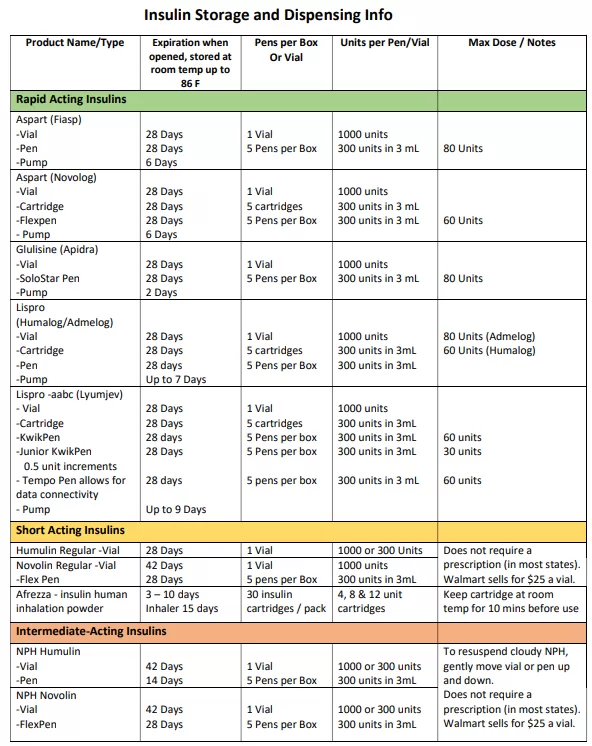
This chart, compiled based on ADA Standard 4, details the types of vaccines, when, and how often they are recommended for people with diabetes. The recommendations in general were very similar to last year. The COVID-19 vaccine and boosters are suggested starting at six months of age.
This standard emphasized reminding people with diabetes to avoid the live attenuated influenza vaccine and it included additional clarification on the pneumonia vaccines. For a comprehensive list of vaccines, refer to the Centers for Disease Control and Prevention web site at cdc.gov/vaccines/.
For the content included in these 5 pages, our resident expert pharmacist updated dosing ranges, considerations and added newer lipid lowering and blood pressure medications to this comprehensive list. A special shout out to our expert and my husband, Kristapor Thomassian, PharmD, BCPS, for his hours of review, edits and content negotiations with the company CEO and wife of 26 years.
If you are preparing for the CDCES exam, you will need to be familiar with the most common blood pressure and cholesterol medication classes and side effects along with when they are indicated based on the ADA Standards. For the BC-ADM exam, you will need to know the same information but in more detail, imagining you would be familiar enough with these medications to prescribe them or make need adjustments and additions.

We hope you will stop by our complete Cheat Sheet Library!!
ADA Standards of Care 2025 Webinar Update
Join us live on Jan. 30th @ 11:30am PST
Our Level 2 Courses make learning the ADA Standards of Care easy and effective by breaking them down into bite-sized, essential topics for clinical practice and exam prep. You can follow the course order based on the Standards, or choose your own path, starting with what you know least and building from there.
This course is perfect for healthcare professionals looking to master the ADA Standards for better clinical practice or for those preparing for the BC-ADM or CDCES exams.
Each webinar focuses on key content, helping you make the most of your study time. Our instructor also uses polls to highlight important concepts, so you can test your knowledge and pick up the best exam strategies.
Sign up for Diabetes Blog Bytes – we post weekly Blog Bytes that are informative and FREE! Every week we post one exam practice Question of the Week and Rationale of the Week. Sign up below!
Recent Blog Bytes
The use of DES products does not guarantee the successful passage of the certification exam. CBDCE and ADCES do not endorse any preparatory or review materials for the CDCES or BC-ADM exams, except for those published by CBDCE & ADCES.
Question of the Week | ADA Standards identify another 1st Line med to treat kidney disease. Which one?

According to the ADA 2025 Standards, new clinical trials suggest that another diabetes medication (besides SGLT-2i) can be used as a first line agent to treat chronic kidney disease.
Which of the folowing diabetes meds is effective as a first-line agent for people with CKD?
- Afrezza inhaled insulin
- Semaglutize (Ozempic)
- Amylin (Pramlintide)
- Sitagliptin (Januvia)
Want to learn more about this question?
Join us live on January 30th @ 11:30am PST for our
Level 2 | Standards of Care Course
This course, updated annually, is an essential review for anyone in the field of diabetes. Join Coach Beverly as she summarizes the annual updates to the American Diabetes Association’s (ADA) Standard of Medical Care in Diabetes & provides critical teaching points & content for healthcare professionals involved in diabetes care & education.
All hours earned count toward your CDCES Accreditation Information
Sign up for Diabetes Blog Bytes – we post weekly Blog Bytes that are informative and FREE! Every week we post one exam practice Question of the Week and Rationale of the Week. Sign up below!
Recent Blog Bytes
The use of DES products does not guarantee the successful passage of the certification exam. CBDCE and ADCES do not endorse any preparatory or review materials for the CDCES or BC-ADM exams, except for those published by CBDCE & ADCES.
January 2025 E-Newsletter
At the beginning of each year, Coach Beverly excitedly scans the new ADA Standards to discover updates and advances in diabetes care. She then integrates these new findings into our courses and web content to ensure we accurately reflect the latest guidelines.
In our first newsletter of 2025, we are excited to share our library of annually reviewed Cheat Sheets that integrate the 2025 Standards! They are available on our website and CDCES Coach App for easy access, with the option to download and share with your colleagues and people living with diabetes alike.
We are thrilled to recognize a trailblazer in Northern California who is mentoring eight new diabetes care and education specialists. Janelle Revnak, MS, RDN, CDCES, realized that more educators were needed to meet the needs of her rural community and took action. Read more about her story and bold plan below.
Christine Craig, MS, RD, CDCES, highlights the importance of sleep in improving health and suggests actions that diabetes care and education specialists can take to address sleep health as a vital component of diabetes care.
Coach Beverly addresses commonly asked questions for those taking the CDCES Exam, including information on our practice hours tracker and which ADA Standards year to study.
We encourage you to test your knowledge with our Question and Rationale of the Week. January kicks off our Level 1 Fundamental Series, followed by our annual ADA Standards of Care update and Level 3 Mastery Course Series in February. We hope to see you there!
Here is to a 2025 filled with self-compassion and moments of awe.
Coach Beverly, Bryanna, Tiffany, and Christine

|
Announcements ___________________________ |
Sign up for Diabetes Blog Bytes – we post weekly Blog Bytes that are informative and FREE! Every week we post one exam practice Question of the Week and Rationale of the Week. Sign up below!
Recent Blog Bytes
The use of DES products does not guarantee the successful passage of the certification exam. CBDCE and ADCES do not endorse any preparatory or review materials for the CDCES or BC-ADM exams, except for those published by CBDCE & ADCES.
Question of the Week | Diabetes and Malnutrition Risk

The 2025 ADA Standards of Care have added recommendations for malnutrition screening.
According to these updated standards, who could be at risk for malnutrition?
- An individual with a BMI of 38 and 21% weight loss in the past 6 months.
- An individual on incretin therapy with intentional 18-pound weight loss in the past 2 months.
- An 86-year-old with type 1 diabetes and reported recent decline in activity and strength.
- All the above
Want to learn more about this question?
Join us live on Jan. 30th for our
2025 Standards of Care
Level 2

This course, updated annually, is an essential review for anyone in the field of diabetes. Join Coach Beverly as she summarizes the annual updates to the American Diabetes Association’s (ADA) Standard of Medical Care in Diabetes & provides critical teaching points & content for healthcare professionals involved in diabetes care & education.
All hours earned count toward your CDCES Accreditation Information
Sign up for Diabetes Blog Bytes – we post weekly Blog Bytes that are informative and FREE! Every week we post one exam practice Question of the Week and Rationale of the Week. Sign up below!
Recent Blog Bytes
The use of DES products does not guarantee the successful passage of the certification exam. CBDCE and ADCES do not endorse any preparatory or review materials for the CDCES or BC-ADM exams, except for those published by CBDCE & ADCES.
Bold Front-of-Food Labeling Proposal

Clarifying “Healthy” on Food Labels
To address nutrition’s role in chronic disease, the FDA proposes a bold new front-of-package nutrition labeling law aimed at helping consumers make healthier food choices.
The proposed nutrition label is intended to complement the nutrition facts label and would categorize saturated fat, sodium, and added sugars as low, medium, or high. This proposal comes on the heels of the December 2024 definition update of the nutrition claim “healthy.”
To be labeled as “healthy”, products must contain fruit, vegetables, protein, dairy, or grains and meet certain nutrient limits. As diabetes care and education specialists, it is essential to be aware of this FDA initiative, since it aligns with the 2025 ADA Standards of Care nutrition therapy recommendations3 and global efforts to address diet-related health issues.
Front-of -Package Food Labeling decreased High Sugar Purchases
In Fall 2023, my family and I spent five months in Chile, offering a firsthand view of the impact of front-of package policies on the grocery landscape. Similar to global trends, over the past twenty years, Chilean diet patterns have shifted toward packaged and fast-food consumption.
Recognizing the connection between diet and chronic disease, Chile implemented ambitious food policies. Key measures included increased taxation on sugar-sweetened beverages, front-of-package warning labels, restrictions on child-targeted food marketing, and bans on unhealthy food sales in schools.4 In 2016, Chile became the first country to require front-of-package warning labels for foods high in calories, saturated fat, added sugars, and sodium. Outcomes from these measures significantly reduced purchases of sugar-sweetened beverages by nearly 24% within two years and reduced overall purchases of “high in sugar” food and beverage-labeled foods.4 Countries throughout South America, Israel, and Canada have followed suit with required front-of-package warning or stop light labeling.5 They have all shown improved consumer awareness and changes to diet intake, which has also influenced manufacturers’ food reformulation.
Unintended Consequences – More Non-Caloric Sweeteners
Despite the progress in Chile’s nutrition policy efforts, unintended consequences emerged. To avoid warning labels, food companies reformulated products, especially those “high in sugar.” By 2020, Chile’s total percentage of non-caloric sweeteners increased to be within over 50% of all products.6
The FDA is encouraged that its’ proposed front-of-package nutrition labeling system will encourage product reformulation to align with new policies.2 While reformulations can be beneficial, they also raise concerns about continued reliance on low nutrient-density processed food consumption and additives such as non-nutritive sweeteners, which the World Health Organization and the American Diabetes Association discourage.3
It will be important to monitor behavioral purchasing changes along with the long-term health benefits or implications of reformulated products to ensure U.S. new labeling guidance actually achieve healthier dietary patterns.
Advocate for Whole Food-Based Eating Patterns
As we embark on a new era of food and chronic care policy efforts, diabetes educators can learn from other countries’ successes and challenges while advocating for policies that foster healthier dietary and socioeconomic environments. Where appropriate, we can encourage a shift toward whole food-based eating patterns and reduced reliance on processed food consumption. We can stay abreast and advocate for policy and action alerts impacting nutrition and diabetes care.
By complementing front-of-package labeling proposals with educational campaigns, community-level interventions, and policies that address quality food access, we can improve population health and address the root causes of health disparities.
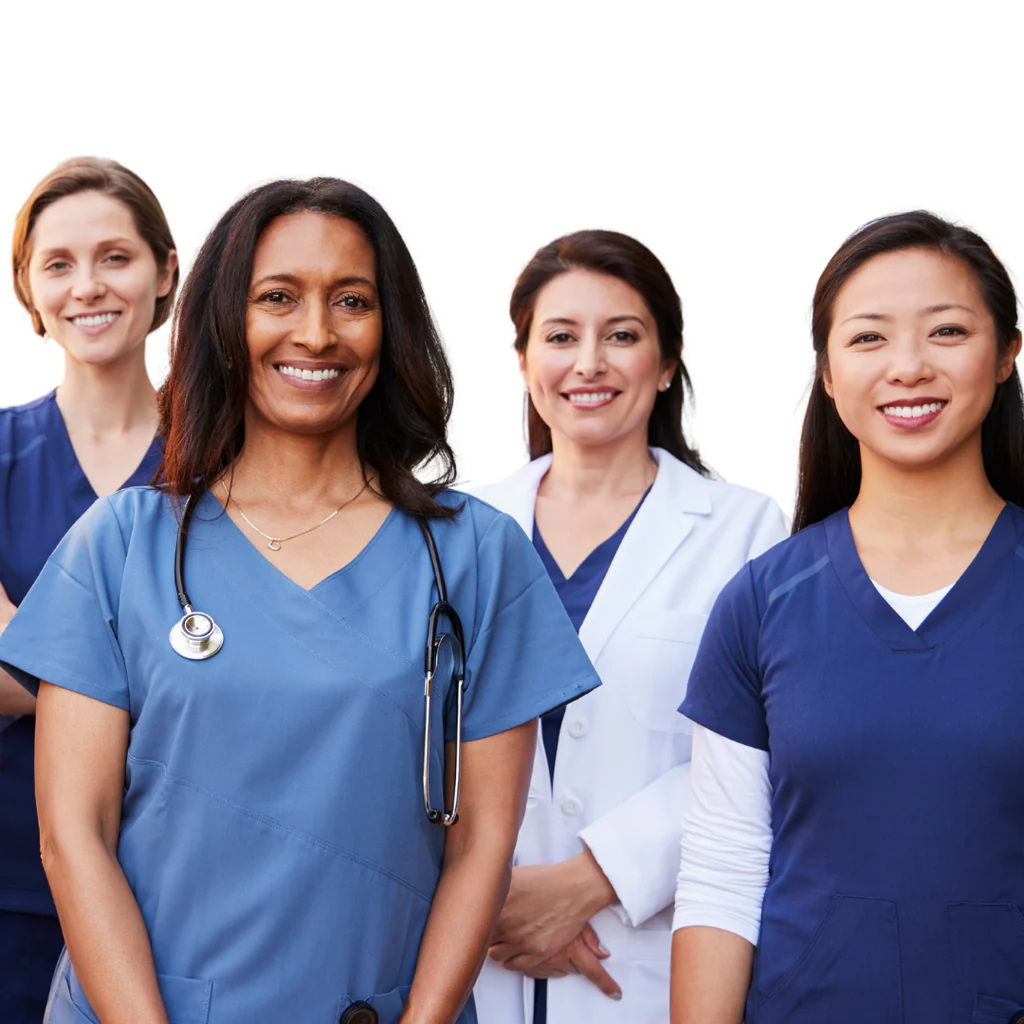
Learn More:
Get Involved in Advocacy:
- American Diabetes Association Advocacy Overview
- Association of Diabetes Care and Education Specialists Advocacy
- American Dietetic Association Advocacy
References:
- CDC: Diabetes. Download on January 18th, 2025 from https://www.cdc.gov/diabetes/communication-resources/1-in-3-americans.html
- Food Labeling: Front-of-Package Nutrition Information (Proposed Rule). Downloaded on January 19th 2025 from Source.
- American Diabetes Association Professional Practice Committee; 5. Facilitating Positive Health Behaviors and Well-being to Improve Health Outcomes: Standards of Care in Diabetes—2024. Diabetes Care1 January 2024; 47 (Supplement_1): S77–S110. https://doi.org/10.2337/dc24-S005
- Taillie LS, Reyes M, Colchero MA, Popkin B, Corvalán C. An evaluation of Chile’s Law of Food Labeling and Advertising on sugar-sweetened beverage purchases from 2015 to 2017: A before-and-after study. PLoS Med. 2020 Feb 11;17(2):e1003015.
- Front-of-package labeling. Downloaded on 1/18/2025 from https://www.globalfoodresearchprogram.org/resource/front-of-package-label-maps/
- Sambra V, López-Arana S, Cáceres P, Abrigo K, Collinao J, Espinoza A, Valenzuela S, Carvajal B, Prado G, Peralta R, Gotteland M. Overuse of Non-caloric Sweeteners in Foods and Beverages in Chile: A Threat to Consumers’ Free Choice? Front Nutr. 2020 Jun 17;7:68
Upcoming Courses You Won’t Want to Miss!
Join us this January for 2025 Level 1 courses! This bundle is specifically designed for healthcare professionals who want to learn more about diabetes fundamentals for their clinical practice or for those who are studying for the Certified Diabetes Care and Education Specialist (CDCES) exam.
In each webinar, our instructors highlight the critical content of each topic area so you can focus your study time most efficiently. They also launches multiple poll questions that highlight key concepts to help students assess their knowledge and learn the best test-taking strategies.
Each individual online course includes a: video presentation, podcast, practice test, and additional resources. After purchase, you have immediate access to your courses for 1 full year. Download Level 1 Flyer here for schedule.
You are invited to join Coach Beverly for this FREE Webinar Jan. 13th, 2025 @ 11:30am PST. In this webinar, Beverly will take you through 20 sample questions from our Test Taking Toolkit, explaining the answers and the rationale behind each one.
Enrolling is simple! Register for free and get 20 sample questions with rationales, or gain instant access to 200+ practice questions by purchasing our Test Taking Toolkit for $49. Take advantage of this affordable and comprehensive preparation tool and get one step closer to exam success! Don’t leave your success to chance – prepare with this FREE webinar and be ready to tackle your exam with confidence.
We hope to see you there.
As diabetes technology is becoming commonplace in our practice, figuring out how to make sense of all the data can seem overwhelming. Join Diana Issacs and Coach Beverly for a truly unique learning experience.
Dr. Isaacs has a special knack for breaking down the essential elements of the Ambulatory Glucose Profile (AGP) report to provide participants with a clear road map for data interpretation. She includes many sample practice cases utilizing CGM data for various types of people with diabetes including type 2 and people with type 1 not on pumps. Coach Beverly will build on Dr. Isaacss’ presentation and switch the focus to the person living with diabetes. Using a case study approach, she will provide strategies to integrate the AGP with person-centered care that empowers individuals to experience increased confidence in their diabetes self-management.
5 reasons you need to attend this course.
- Gain confidence in interpreting AGP reports.
- Help individuals make the most of their data to improve care.
- Increase success on the CDCES and BC-ADM Exam.
- Improve expertise on insulin and nutrition adjustments.
- Develop strategies to support individual care.
Register today and take the next step toward becoming a more effective and informed diabetes care provider.
Sign up for Diabetes Blog Bytes – we post weekly Blog Bytes that are informative and FREE! Every week we post one exam practice Question of the Week and Rationale of the Week. Sign up below!
Recent Blog Bytes
The use of DES products does not guarantee the successful passage of the certification exam. CBDCE and ADCES do not endorse any preparatory or review materials for the CDCES or BC-ADM exams, except for those published by CBDCE & ADCES.


